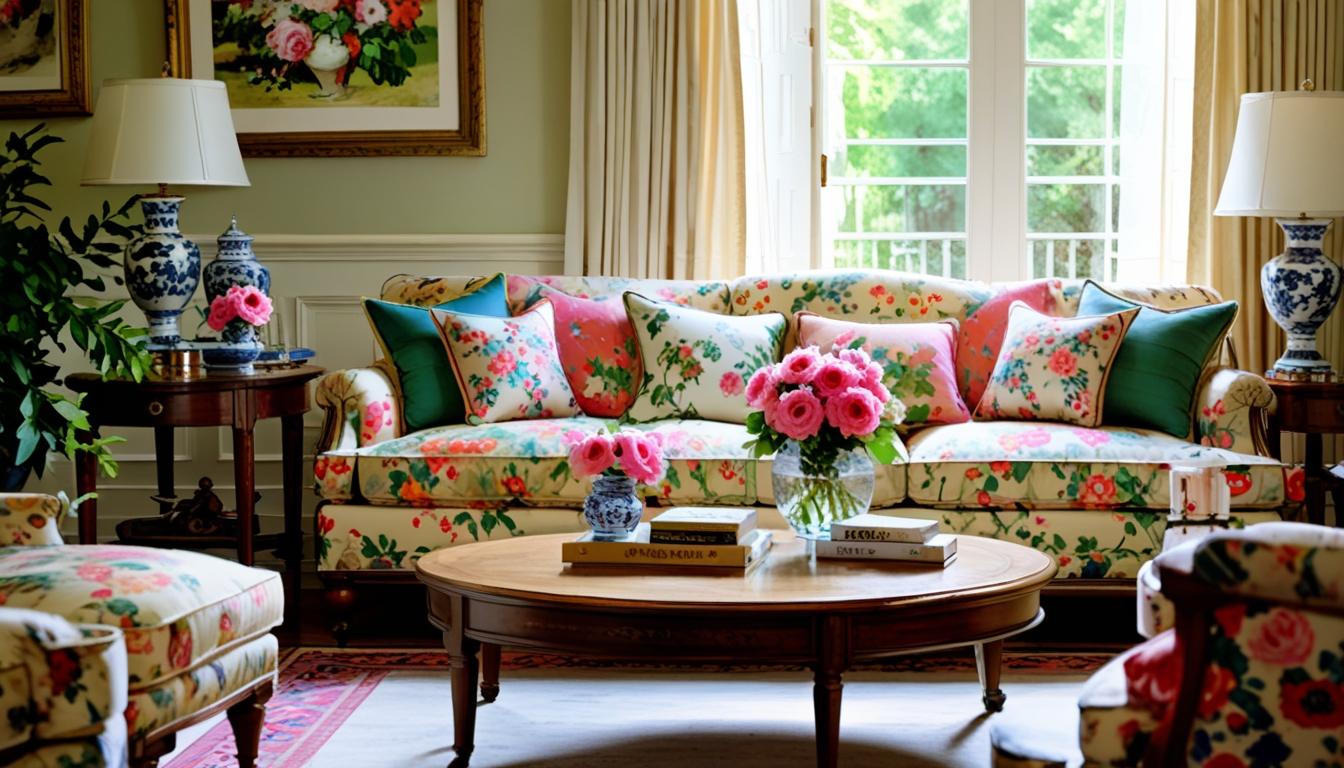The historic floral print chintz is experiencing a revival, blending classic design with modern aesthetics as spring approaches.
The return of chintz, a historic floral print, has been making waves in contemporary home décor, seamlessly blending classic design with modern aesthetics. The Irish Independent reports that as the season shifts to spring, the once rigid boundaries between indoor and outdoor living are being joyfully blurred, as homeowners begin to update their spaces with nature-inspired motifs.
Originating in India during the 1600s through woodblock printing, chintz was initially embraced by European elites for its intricate floral designs. So coveted were these textiles that both France and England implemented bans on their sale to protect local textile industries unable to replicate the unique patterns. This print has history; figures such as George Washington purchased extensive amounts for his home at Mount Vernon, and Jackie Kennedy’s renovation of the White House featured chintz prominently in her design choices.
However, by the end of the 1980s, chintz had fallen out of favor due to its association with overly ornate decorations, leading to a decline in popularity that was accentuated by advertisements encouraging a departure from the style. The shift in taste resulted in a period where chintz was often regarded as outdated and overly frilly.
Fast forward to recent years, and the floral pattern is experiencing a renaissance, gaining new life and redefinition. Designers are reinterpreting chintz with a fresh perspective, expanding its patterns and colors to fit into modern interior design concepts. The trend is characterized by a maximalist approach that embraces bold patterns, vibrant colors, and diverse textures in upholstery and decorative accessories.
House of Hackney has been a prominent advocate for the contemporary chintz revival, maintaining a steadfast appreciation for the print with designs that blur the lines between nostalgic and avant-garde. Their floral creations have been likened to “Colefax and Fowler on acid,” a reference to classic British design, but infused with a modern, energetic flair.
Notable designers such as Josef Frank have also made significant contributions to the genre. His collaboration with Estrid Ericson founded Svenskt Tenn in 1924 and continues to be celebrated for its striking floral motifs, exemplified in pieces such as the cabinet draped in his ‘Poisons’ textile.
Retail brands have also jumped on the bandwagon, with Liberty of London leading the charge with chic floral prints that are now featured across various products, including homeware and furnishings. The latest collaboration with designer Sophie Robinson introduces vibrant wallpaper patterns that evoke the enchanting beauty of a secret garden, highlighting the versatility of chintz.
Another noteworthy addition to the scene is the Hay x Chart limited-edition embroidered sofa, designed by Icelandic designer Loji Höskuldsson, who drew inspiration from a spring cleaning session in his garden. This piece encapsulates the fusion of ideas that contemporary designers bring to classic motifs.
Cath Kidston, known for its signature floral prints, continues to innovate under the ownership of Next, introducing a new range of lighting that integrates traditional patterns with a modern twist, reinforcing the enduring appeal of floral designs.
As seen with retailers like Maison Flaneur and Matilda Goad, the focus on curated, unique pieces is rising. These brands offer original items that celebrate craftsmanship, making stylish design more accessible. From beautifully crafted serving plates to colorful, hand-decorated candles, the embrace of chintz reflects a penchant for individuality and creativity in home decor.
This resurgence demonstrates that chintz, long considered a bygone trend, is finding its place in contemporary settings—whether through full-on floral immersion or subtle accents, the print invites a lively touch to home interiors that celebrates its storied past while looking toward the future.
Source: Noah Wire Services




What’s up, this weekend is fastidious in favor
of me, because this moment i am reading this
great informative piece of writing here at my residence.
casino en ligne fiable
I have been exploring for a little bit for any high-quality articles or
weblog posts in this kind of house . Exploring in Yahoo I ultimately stumbled upon this site.
Studying this info So i am happy to express that I’ve a very excellent uncanny feeling I discovered exactly what I
needed. I such a lot certainly will make certain to do not overlook this website and provides it a glance
regularly.
meilleur casino en ligne
I don’t know whether it’s just me or if everybody else encountering
issues with your site. It appears as if some of the written text on your posts are running off the screen. Can somebody else please comment and let
me know if this is happening to them too? This could be a issue with my internet browser
because I’ve had this happen previously. Appreciate it
casino en ligne France
Excellent article. I will be dealing with a few
of these issues as well..
casino en ligne francais
Hello to every single one, it’s truly a pleasant for me to
pay a visit this web page, it includes priceless Information.
casino en ligne
This is really interesting, You are a very skilled blogger.
I have joined your rss feed and look forward to seeking more of your magnificent post.
Also, I’ve shared your site in my social networks!
casino en ligne
Excellent blog right here! Also your site lots up fast! What host are you
the use of? Can I am getting your associate hyperlink for your host?
I wish my site loaded up as quickly as yours
lol
casino en ligne
You ought to be a part of a contest for one of the
greatest websites on the net. I will highly recommend this site!
casino en ligne
Thank you for the good writeup. It in fact was a amusement account it.
Look advanced to more added agreeable from you! By the
way, how could we communicate?
casino en ligne France
This website was… how do you say it? Relevant!! Finally
I have found something that helped me. Thanks a lot!
casino en ligne fiable